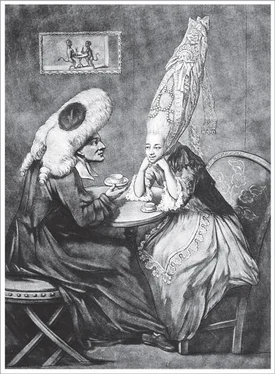Bill Bryson - At Home
Здесь есть возможность читать онлайн «Bill Bryson - At Home» весь текст электронной книги совершенно бесплатно (целиком полную версию без сокращений). В некоторых случаях можно слушать аудио, скачать через торрент в формате fb2 и присутствует краткое содержание. Жанр: Старинная литература, на английском языке. Описание произведения, (предисловие) а так же отзывы посетителей доступны на портале библиотеки ЛибКат.
- Название:At Home
- Автор:
- Жанр:
- Год:неизвестен
- ISBN:нет данных
- Рейтинг книги:4 / 5. Голосов: 1
-
Избранное:Добавить в избранное
- Отзывы:
-
Ваша оценка:
- 80
- 1
- 2
- 3
- 4
- 5
At Home: краткое содержание, описание и аннотация
Предлагаем к чтению аннотацию, описание, краткое содержание или предисловие (зависит от того, что написал сам автор книги «At Home»). Если вы не нашли необходимую информацию о книге — напишите в комментариях, мы постараемся отыскать её.
At Home — читать онлайн бесплатно полную книгу (весь текст) целиком
Ниже представлен текст книги, разбитый по страницам. Система сохранения места последней прочитанной страницы, позволяет с удобством читать онлайн бесплатно книгу «At Home», без необходимости каждый раз заново искать на чём Вы остановились. Поставьте закладку, и сможете в любой момент перейти на страницу, на которой закончили чтение.
Интервал:
Закладка:
What was desperately needed was a way of keeping foods safe and fresh for longer periods than nature allowed. In the late eighteenth century, a Frenchman named Nicolas-François Appert produced a book called The Art of Preserving All Kinds of Animal and Vegetable Substances for Several Years , which represented a real breakthrough. Appert’s system consisted essentially of sealing food in glass jars and then heating the jars slowly. The method generally worked pretty well, but the seals were not entirely foolproof and sometimes air and contaminants got in, to the gastrointestinal distress of those who partook of the contents. Since it wasn’t possible to have total confidence in Appert’s jars, no one did.
In short, a lot of things could go wrong with food on its way to the table. So when in the early 1840s a miracle product came along that promised to transform matters, there was a great deal of excitement. The product was an unexpectedly familiar one: ice.
II
In the summer of 1844, the Wenham Lake Ice Company—named for a lake in Massachusetts—took premises in the Strand in London, and there each day placed a fresh block of ice in the window. No one in England had ever seen a block of ice that big before—certainly not in summer, not in the middle of London—or one that was so wondrously glassy and clear. You could actually read through it: a newspaper was regularly propped behind the block so that passersby could see this amazing fact for themselves. The shop window became a sensation and was regularly crowded with gawkers.
Thackeray mentioned Wenham ice by name in a novel. Queen Victoria and Prince Albert insisted on its use at Buckingham Palace and awarded the company a royal warrant. Many people supposed Wenham to be a massive body of water, on the scale of one of the Great Lakes. Charles Lyell, the English geologist, was so intrigued that he made a special trip to the lake from Boston—not a particularly easy thing to do—while on a speaking tour. He was fascinated by how slowly Wenham ice melted, and assumed it had something to do with its celebrated purity. In fact, Wenham ice melted at the same speed as any other ice. Except that it had traveled far, it wasn’t actually special in any way at all.
Lake ice was a marvelous product. It created itself at no cost to the producer, was clean, renewable, and infinite in supply. The only drawbacks were that there was no infrastructure to produce and store it, and no market to sell it to. In order to make the ice industry exist, it was necessary to work out ways to cut and lift ice on a large scale, build storehouses, secure trading rights, and engage a reliable chain of shippers and agents. Above all, the producer had to create a demand for ice in places where ice had seldom or never been seen and was most assuredly not something anyone was predisposed to pay for. The man who did all this was a Bostonian of good birth and challenging disposition named Frederic Tudor. Making ice a commercial proposition became his overweening obsession.
The notion of shipping ice from New England to distant ports was considered completely mad—“the vagary of a disordered brain,” in the words of one of his contemporaries. The first shipment of ice to Britain so puzzled customs officials as to how to classify it that all three hundred tons of it melted away before it could be moved off the docks. Shipowners were highly reluctant to accept it as cargo. They didn’t relish the humiliation of arriving in a port with a holdful of useless water, but they were also wary of the very real danger of tons of shifting ice and sloshing meltwater making their ships unstable. These were men, after all, whose nautical instincts were based entirely on the idea of keeping water outside the ship, so they were loath to take on such an eccentric risk when there wasn’t even a certain market at the end of it all.
Tudor was a strange and difficult man—“imperious, vain, contemptuous of competitors and implacable to enemies,” in the estimation of the historian Daniel J. Boorstin. He alienated all his closest friends and betrayed the trust of colleagues, almost as if that were his life’s ambition. Nearly all the technological innovations that made the ice trade possible were actually the work of his retiring, compliant, long-suffering associate Nathaniel Wyeth. It cost Tudor years of frustrated endeavor, and all of his family fortune, to get the ice business up and running, but gradually it caught on and eventually it made him and many others rich. For several decades, ice was America’s second biggest crop, measured by weight. If securely insulated, ice could last a surprisingly long while. It could even survive the 16,000-mile, 130-day trip from Boston to Bombay—or at least about two-thirds of it could, enough to make the long trip profitable. Ice went to the farthest corners of South America and from New England to California via Cape Horn. Sawdust, a product previously without any value at all, proved to be an excellent insulator, providing useful extra income for Maine lumber mills.
Lake Wenham was actually completely incidental to the ice business in America. It never produced more than about ten thousand tons of ice in a year, compared with almost a million tons lifted annually just from the Kennebec River in Maine. In England, Wenham ice was more talked about than used. A few businesses took regular deliveries, but hardly any households (other than the royal one) did. By the 1850s, most ice sold in Britain was not from Wenham or even from America. The Norwegians—not a people one normally associates with sharp practices—changed the name of Lake Oppegaard, near Oslo, to Lake Wenham so that they could tap into the lucrative market. By the 1850s most ice sold in Britain was in fact Norwegian, though it has to be said that ice never really caught on with the British. Even now, it is still often dispensed there as if it were on prescription. The real market, it turned out, was in America itself.
As Gavin Weightman notes in his history of the business, The Frozen-Water Trade , Americans appreciated ice as no people had before. They used it to chill beer and wine, to make delectable icy cocktails, to soothe fevers, and to create a vast range of frozen treats. Ice cream became popular—and startlingly inventive, too. At Delmonico’s, the celebrated New York restaurant, customers could order pumpernickel rye ice cream and asparagus ice cream, among many other unexpected flavors. Manhattan alone consumed nearly 1 million tons of ice a year, while Brooklyn sucked down 334,000 tons, Boston 380,000, and Philadelphia 377,000. Americans grew immensely proud of the civilizing conveniences of ice. “Whenever you hear America abused,” one American told Sarah Maury, a visiting Briton, “remember the ice.”
Where ice really came into its own was in the refrigeration of railway cars, which allowed the transport of meat and other perishables from coast to coast. Chicago became the epicenter of the railway industry in part because it could generate and keep huge quantities of ice. Individual ice houses in Chicago held up to 250,000 tons of ice. Before ice, in hot weather milk (which came out of the cow warm, of course) could be kept for only an hour or two before it began to spoil. Chicken had to be eaten on the day of plucking. Fresh meat was seldom safe for more than a day. Now food could be kept longer locally, but it could also be sold in distant markets. Chicago got its first lobster in 1842, brought in from the East Coast in a refrigerated railway car. Chicagoans came to stare at it as if it had arrived from a distant planet. For the first time in history food didn’t have to be consumed close to where it was produced. Farmers on the boundless plains of the American Midwest could not only produce food more cheaply and abundantly than anywhere else but also sell it almost anywhere.
Читать дальшеИнтервал:
Закладка:
Похожие книги на «At Home»
Представляем Вашему вниманию похожие книги на «At Home» списком для выбора. Мы отобрали схожую по названию и смыслу литературу в надежде предоставить читателям больше вариантов отыскать новые, интересные, ещё непрочитанные произведения.
Обсуждение, отзывы о книге «At Home» и просто собственные мнения читателей. Оставьте ваши комментарии, напишите, что Вы думаете о произведении, его смысле или главных героях. Укажите что конкретно понравилось, а что нет, и почему Вы так считаете.












